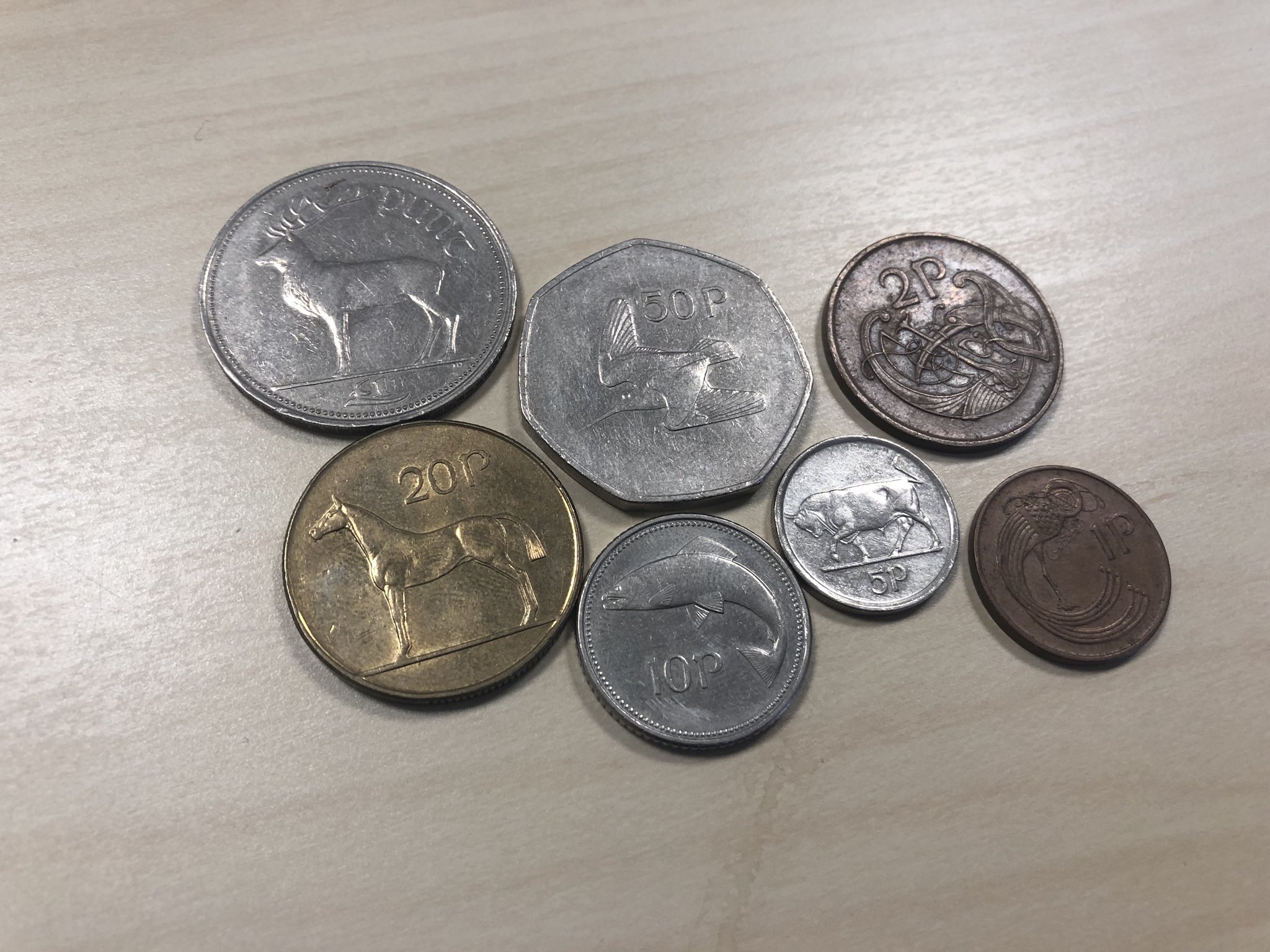The Irish Punt was the currency that Ireland used before it joined the Euro currency in 2002.
We’ll look at the Punt’s history and how Ireland eventually left it behind for a currency shared with 19 other nations throughout the EU.
What are Punts in Ireland?
Every nation has a long and storied past with money, currencies and bartering for goods and services.
It wasn’t until the Romans and Vikings came over that our nation was first introduced to coins. Historians believe that it was the Vikings who produced the first Irish coins.
History and Etymology of the Punt
The word “punt” has very similar origins to “pound.” If you were to hear an Irish person saying the word “pound,” it would sound like “Punt.”
The Irish Pound was referred to as a “Punt” so often even the English started calling it that.
The Punt first came to Ireland in the 10th Century. King John (who at that time was King of both England and Ireland) linked the Irish Punt to the Pound Sterling so that money between his two kingdoms could flow more easily. This likely benefited trade for both Irish and the English but his main reason for doing so was to finance war with France.
In 1460, the value of the two currencies diverged since the Irish Punt was minted with a different amount of silver to the English Pound. Although the two values eventually came close together again because, in 1701, 13 Irish punts was worth 12 English pounds.
Fast forward to 1801, and the Kingdom of Ireland became part of the United Kingdom. Despite officially adopting the pound sterling, the punt was still used amongst the Irish until 1826.
The Punt went on a hiatus during this period until 1928 when the 26 counties officially became the Republic of Ireland post-partition. When Ireland came back, so did the Punt; however, it was at a 1:1 exchange rate with the English Pound.
The Irish Punt was decimalised at the same time as the British currency was and remained that way until Ireland joined the Euro in 2002.
What Coins did the Irish Punt use?
For much of Ireland’s history, the Punt had a de facto but not de jure link to the British Pound.
This essentially meant that although there was a 1:1 value between the currencies, you could not spend Punts in England, nor could you spend Pounds in Ireland.
However, because of the de facto link, Irish money was split and organised into the same coins and notes as England.
Notes:
- 5 Punt
- 10 Punt
- 20 Punt
- 50 Punt
Coins:
- Halfpenny – Decorated with a bird (discontinued in 1985)
- Penny – Decorated with a bird
- Two Pence – Decorated with a bird
- Five Pence – Decorated with a bull
- Ten Pence – Decorated with a salmon
- Twenty Pence – Decorated with an Irish hunter horse
- Fifty Pence – Decorated with a Woodcock bird
- Pound/Punt – Decorated with a Red deer stag
Pre-Decimal Coins:
- Farthing – ¼ of a penny – Decorated with a bird
- Shilling – 12 pence – Decorated with a bull
- Halfpenny – ½ penny – Decorated with a pig
- Penny – 1/100th of a punt – Decorated with a hen
- Threepence – 3 pennies – Decorated with a rabbit.
- Sixpence – 6 pennies – Decorated with a dog
- Florin – 24 pennies – Decorated with a fish
- Half crown – 30 pennies – Decorated with a horse
Why did Ireland abandon the Punt?
After centuries of fighting for independence, Ireland finally achieved independence in the 26 counties, and with it the return of the Irish Punt.
Why then, did Ireland forgo our own national currency in favour of the European Union’s fledgling new currency, the Euro?
Ireland joined the European Monetary System in 1978. Because of the European Exchange Rate Mechanism (we won’t send you to sleep with that one!), the Punt no longer operated at a 1:1 exchange value with the Pound.
There were a multitude of reasons Ireland switched, including creating closer links between the Irish economy and the rest of Europe, and it was in 2002 that Ireland adopted the Euro.
Essentially this allowed Ireland and other EU members to trade more freely and easily than before.

